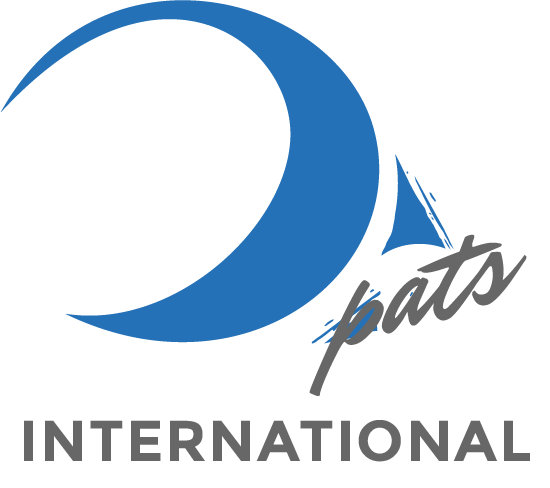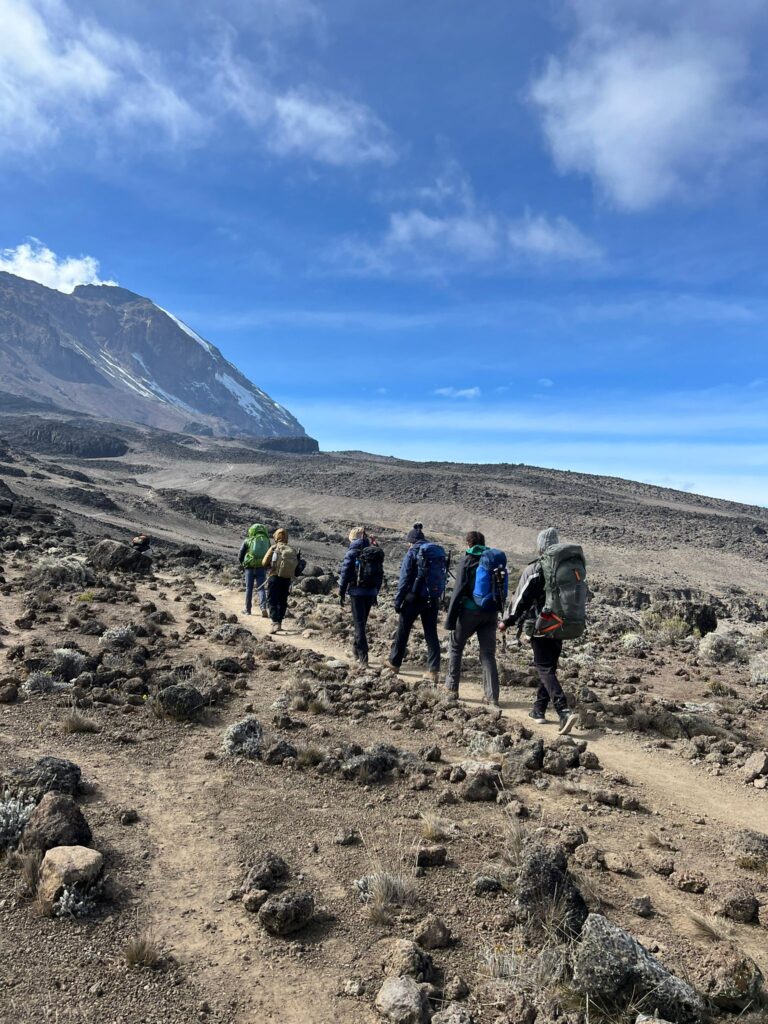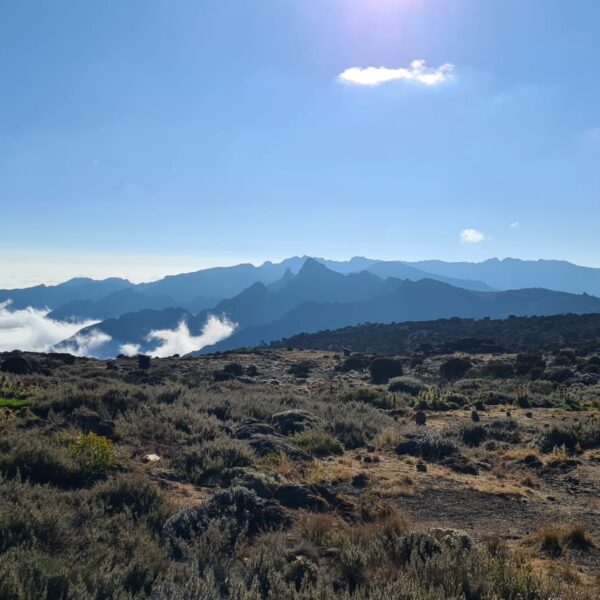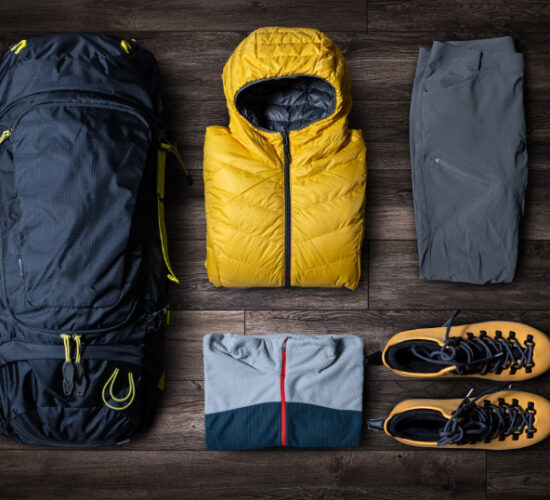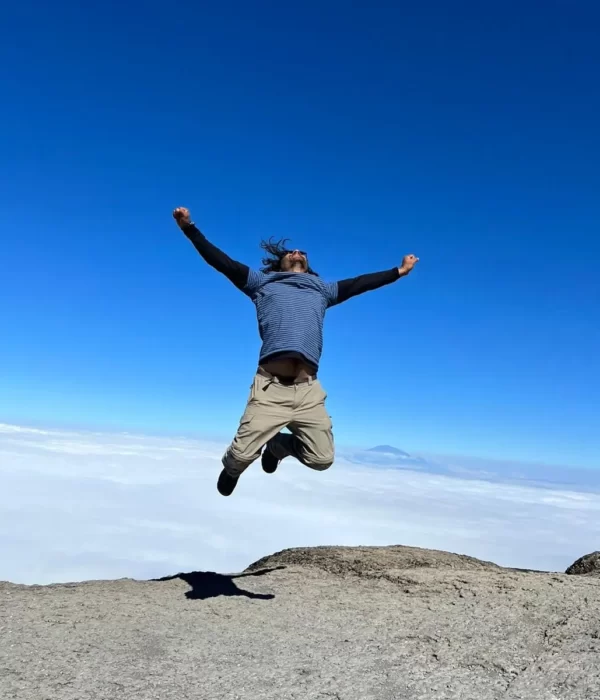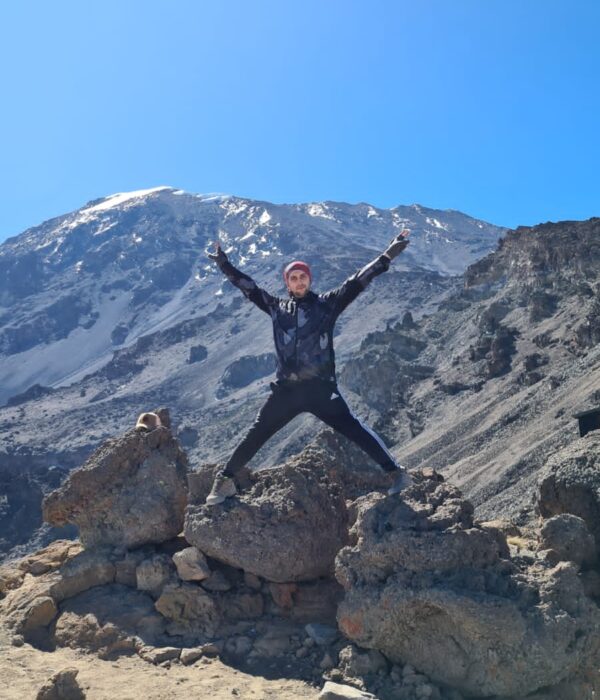Since Mount Kilimanjaro is the largest stratovolcano, standing at 5,895m (19,341ft), it is ranked as the highest free-standing mountain in the world and the tallest summit in Africa. (1) This is not to be confused as the highest ranked mountain in the world, as there’s a clear distinction when comparing Kilimanjaro vs Everest’s height. The prominence of Kilimanjaro is about 4,900m (16,100 ft), with a starting hike elevation of 1,800m above sea level. (2) What this means is that the base of Kilimanjaro is around 1,000m above sea level and Kilimanjaro itself rises approximately 4,900m, from its plateau base. But because none of the seven Kilimanjaro hiking routes start at the base of the mountain, the hiking elevations begin within or just above the forest band of Mount Kilimanjaro, which is around 1,800m to 3,000m above sea level. This is the reason many hikers living at or below sea level have a hard time adjusting to Kilimanjaro’s elevations, at the beginning of their hike. This is especially common if they’re gaining more than 400m in hiking elevations, on a daily basis. (3)
What Is The Elevation Of Kilimanjaro?
- 5,895m (19,340ft) — Kibo peak is the youngest, tallest, and also the central cone on Mount Kilimanjaro. The volcanic cone can either be accessed by Stella Point (5,685m) or Gillman’s Point (5,681m). Routes that lead to Stella Point are Machame, Lemosho, and Umbwe, while Gilman’s Point can only be accessed via Rongai, Northern Circuit, and Marangu routes.
- 5,149m (16,893ft) — Mawenzi peak is Africa’s third tallest peak, after Mount Kenya (5199 meters). (4) The only way to reach Mawenzi summit is by the Rongai and Marangu routes. The Rongai route approaches the mountain from the northern breach, while the Marangu trail approaches the peak from the east.
- 4,877m (16,000ft) — Shira peak is the smallest peak on Mount Kilimanjaro and can only be approached by Machame, Lemosho, and the Northern Circuit routes. (5) These routes normally take 7 to 9 days to complete and approach the peak from the western and southern breach, before joining at Shira 2 camp.
Kilimanjaro Base Elevation
| Kilimanjaro Trails | Base Elevation Of Kilimanjaro |
| 5 Day Marangu Route | 1,843m/ 6,046ft |
| 6 Day Marangu Route | 1,843m/ 6,046ft |
| 6 Day Umbwe Route | 1,600m/ 5,249ft |
| 7 Day Rongai Route | 1,951m/ 6,398ft |
| 7 Day Machame Route | 1,640m/ 5,380ft |
| 7 Day Lemosho Route | 2,360m/ 7,742ft |
| 8 Day Lemosho Route | 2,360m/ 7,742ft |
| 9 Day Northern Circuit Route | 2,360m/ 7,742ft |
1. Northern Circuit Route — 2,360-5895m
The Northern Circuit route has an average elevation gain of 376.25m that stretches over an 8 day hiking duration to Uhuru peak. (6) The route’s minimal elevation gain over an 8-day span is the reason the trail leads in Kilimanjaro summit success rates and performance among first time hikers above 3,000m. This is because, in addition to acclimatizing at Lava Tower, their bodies get enough room to slowly anticipate and adjust to various Kilimanjaro hike distances and elevation changes during their hike.
2. Lemosho Route — 2,360-5895m
The Lemosho route has an average elevation gain of 375m and is the second best performing route on Mount Kilimanjaro, after the Northern Circuit trail. (7) Eventhough Lemosho and then Northern Circuit route share similar acclimatization profiles, the Lemosho route slightly lags behind due to a slightly shorter hiking duration. Though this is the case, Lemosho still performs incredibly well among first time hikers above 3,000m.
3. Machame Route — 1,640-5895m
The Machame route is the most popular trail on Kilimanjaro due to its low budget and great acclimatization profiles. This route to Uhuru Peak has an average elevation gain of 435m over a 6-day hiking span. (8) Though it has a slightly higher elevation gain compared to the Lemosho trail, the Machame and Lemosho routes share similar acclimatization landscapes, aside from the first two days of their Kilimanjaro treks. This is the reason their 7-day hiking variations perform equally well on the mountain.
4. Rongai Route — 1,951-5895m
The Rongai route has an average elevation gain of 613m over a 6 day hiking duration. (9) Though the trail has a slightly higher elevation gain compared to the best performing routes on the mountain, it more than makes up for it during the rainy season. That’s because the trail approaches Kilimanjaro from the Northern breach, which receives less precipitation during heavy rains.
5. Umbwe Route — 1,600-5895m
The Umbwe route has an average elevation gain of 748.75m over a span of 6 days. (10) Umbwe’s fast elevation rise to the summit is the reason the trail is popular among Kilimanjaro record breakers and professional mountaineers. There’s very little room to acclimatize during your hike and the route’s unkempt trails are often hard for many hikers. This is the reason the route is often quiet and secluded throughout the year.
6. Marangu Route — 1,843-5895m
The Marangu route has an elevation gain of 639m over a 6 day hike to the summit. (11) This is the shortest and worst performing route on Kilimanjaro, due to its steep and short hiking trails. Hikers on this route often experience fatigue and altitude sickness because their bodies do not get time to properly adjust and recover from the route’s fast pace. Considering its poor overall performance, many are still lured by the route’s budget cost and comfortable accommodations.
